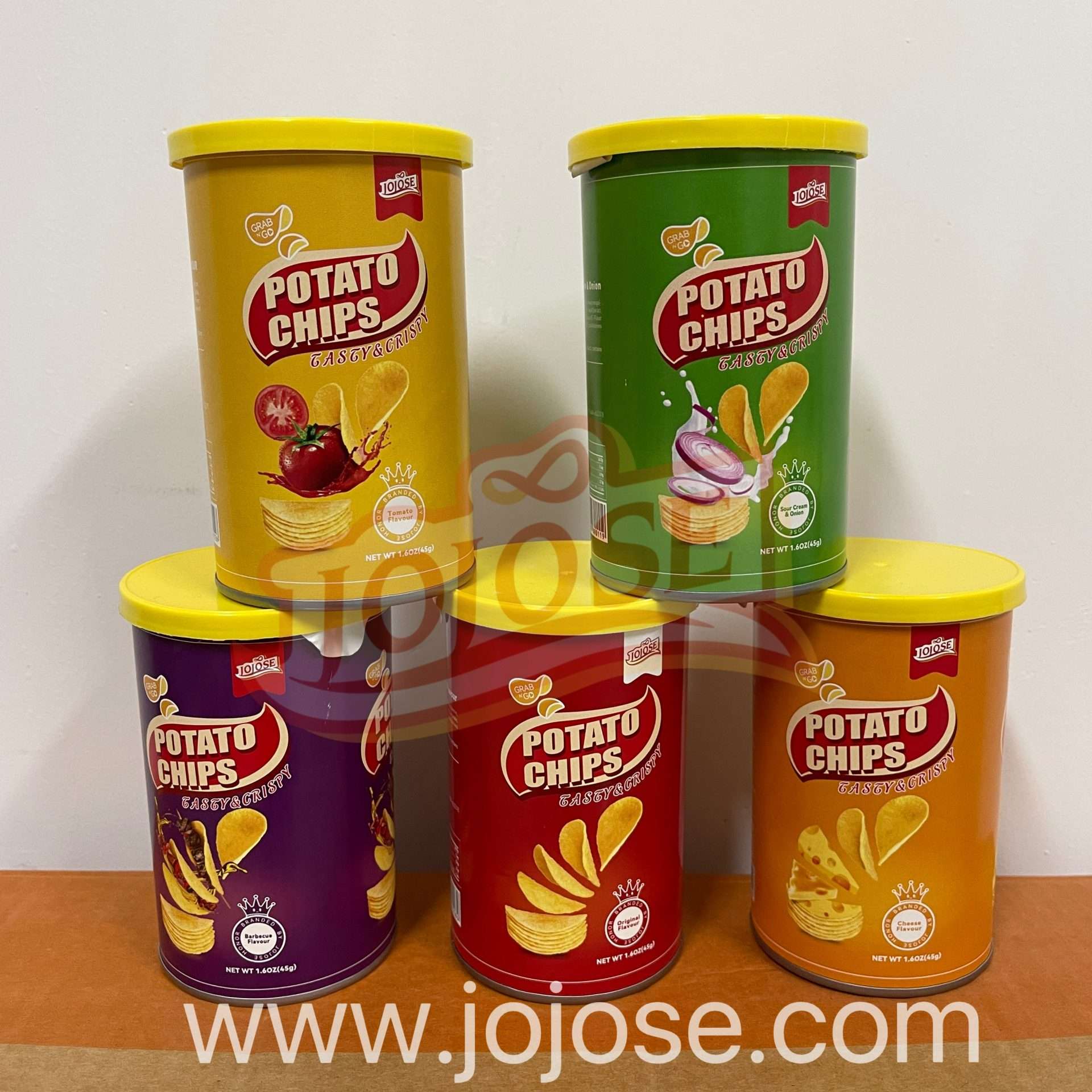The humble beginnings of potato chips or crips to the global potato chip market size with an estimated value of USD 30.7 billion in 2022 tell a lot about its hiked popularity. First domesticated as an edible food in homes between 8,000 and 5,000 BC in current southern Peru and northwestern Bolivia and becoming the world’s favorite snack food, the evolution of potatoes from farms to potato chip factories is an amazing one. In this blog, JOJOSE FOODS delves deeper into how the potato chip factory has evolved over time.
The evolution
There are around four hundred potato chip and crips companies worldwide at present. This number is only increasing as new manufacturers enter this highly lucrative market. Many of the companies have been subject to corporate takeovers or partnership investment schemes by larger groups over the years.
As each year passes, sales increase, companies grow, and new manufacturers and suppliers add competition in this tight market. With people relying more on fast foods and the variety they offer, many potato chip factories have evolved to use new oils, better potatoes, and even vegetables to add unique flavors. The popularity of potato chips is surely going to rise in the future, showing no signs of decreasing.
From domesticated food to giant factories
During the first half of the 20th century—the commercial existence of potato chips, or crips—the product was largely the preserve of grocery stores and street carts. It was regarded as a fresh food and consumed like that only. They were mostly presented in barrels or glass display cabinets in stores. Newspapers and magazines include recipes and articles about fresh potato chips, but their advertising and promotions were limited to the product’s shelf life.
Without a doubt, reliable packaging for the product is one of the primary reasons why potato chips survive in the market viability. Packaging was a useful marketing tool for early iterations of the product.
Packaging in bags, boxes, and tubes
The oldest example of paper or card packaging known to be in existence is from the Saratoga Specialties Company. They included the packaging faithfully.
By the 1920s, the invention of greaseproof bags and airtight packs enabled manufacturers to tackle shelf-life issues. This led to the emergence of potato chip and crips companies and associated businesses and jobs such as machine tooling, printing, and manufacturing facilities.
Gradually, the increased competition, possibilities of wider distribution, and sales possibilities allowed potato chips to enter the mainstream market. Newspapers were primarily used for advertising, where they informed customers of the freshly baked potato chips available in grocery stores. Drawings and catchy slogans were used to achieve this purpose.
Cylindrical tins and boxes with greaseproof protection inside and newly developed bags were started to be used for packaging foodstuff like potato chips. This allowed wholesale potato chips suppliers to supply chips in large quantities, combat limited shelf-life issues, and explore the company’s branding and promotional design.
A technical revolution
Previously, the chips and crackers were cooked in small batches in large pans called kettles. Hence the phrase “kettle cooked”. At that time, the term kettle was used to detonate large rectangular or circular coils that were able to produce between forty and one hundred and twenty pounds of chips per hour. It was only after JD Ferry Company of Harrisburg, Pennsylvania, revolutionized the production of potato chips and crips with their system.
Their developed system includes taking potato chips from the end of the production line being processed through hot oil via a paddle system and depositing them at the other end via a conveyor belt to aid with drying. This enabled manufacturers to produce more thin sliced baked potato chips, and crispier chips in large quantities.
Advertising and promotion
After the Second World War, advertising came into its own. One common post-war promotional approach used was celebrity endorsement. In 1994, England’s most famous international footballer of the time, Gary Lineker, agreed to the advertising of Leicester-based Walker Crips. This smart move has been a major turning point in Walker’s growth, and today it leads the United Kingdom’s snack market by some distance.
The growth of Walker Crisp and its sister company, Lays, has beautifully embraced the power of marketing.
Flavourful impact
Equipped as the most loved snack food, it was high time to experiment with flavors. Although the US records seasoned and spiced chips, it was then only limited to poring in some seasoning, mostly salt, and shaking the bag. It was only until Irishman Joe ‘Spud’f Murphy saw a gap in the market.
Spotting the niche in the Irish market, Murphy set up his own crisp factory in 1954. The company was named Tayto and is still known as one of the world’s best brands today.
Murphy put his employee, Seamus Burke, to work perfecting a new flavor seasoning for their crisps. Burke’s workbench experiment culminated in a cheese and onion variety that Joe Murphy built an empire upon.
With this flavor’s success, Taytos also became the proprietary eponym for crips in Ireland. Tayots seasoning became an overnight sensation, and representatives of the US chip industry flew to Ireland to negotiate the usage rights for the technology Tayots had developed. Murphy is not the inventor of potato chips or crips, but it would not be wrong to say that he made a great contribution to making the international multibillion-dollar snack food that it is today.
Keeping traditions alive in a competitive world
With consumer eating habits changing all over the globe, packed snack items such as chips have become a convenient option. Design changes, printing techniques, modern and sustainable packaging, and continuous exposure to unique flavors are all factors that are going to keep potato chips as a favorite snack worldwide.
Manufacturers are focusing on unique selling points due to regional influences, cooking oil used, brand marketing, and different approaches to packaging design to boost their sales. Brand imagery is one of the factors that drives newcomers away from the existing big brands.
JOJOSE FOODS is one of the leading manufacturers of professionally producing Pringles-style potato chips. From thinly sliced baked potato chips to healthy potato chips, we have a wide range of products to cater to a wide range of audiences. With manufacturing services available in more than 100+ countries and growing, we are successfully catering to audiences of different food preferences.
Conclusion
In conclusion, the evolution of the potato chip factory from its humble beginnings to its current global prominence is a fascinating journey. From small-scale production to large-scale manufacturing, innovative packaging, and flavor experimentation, the potato chip industry has continually adapted to meet changing consumer preferences. It remains a beloved snack worldwide, with a bright and flavorful future ahead.




